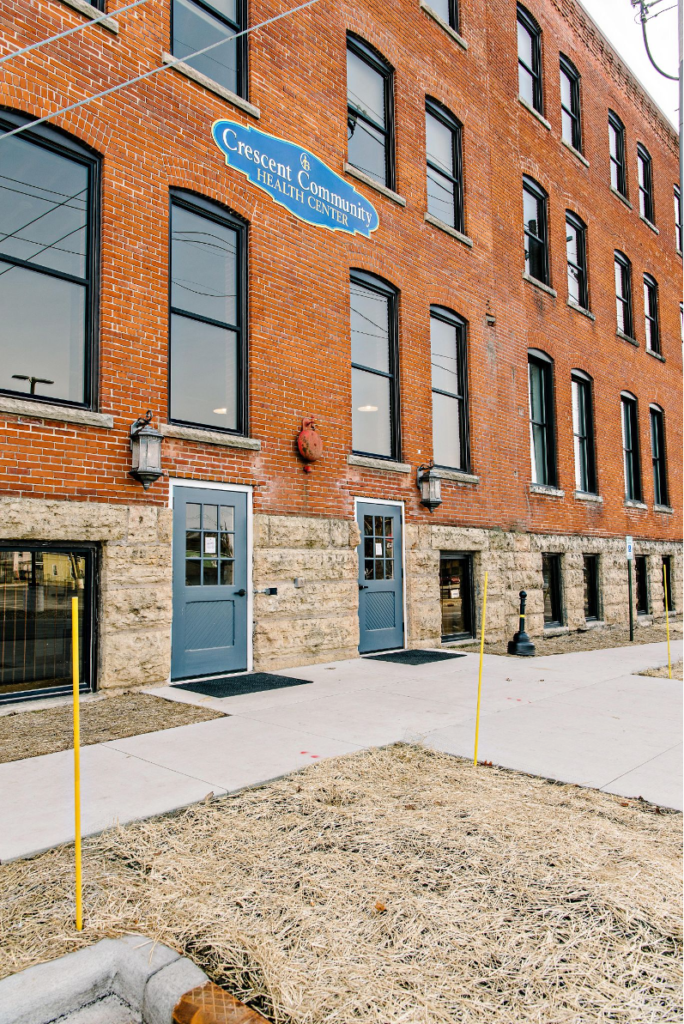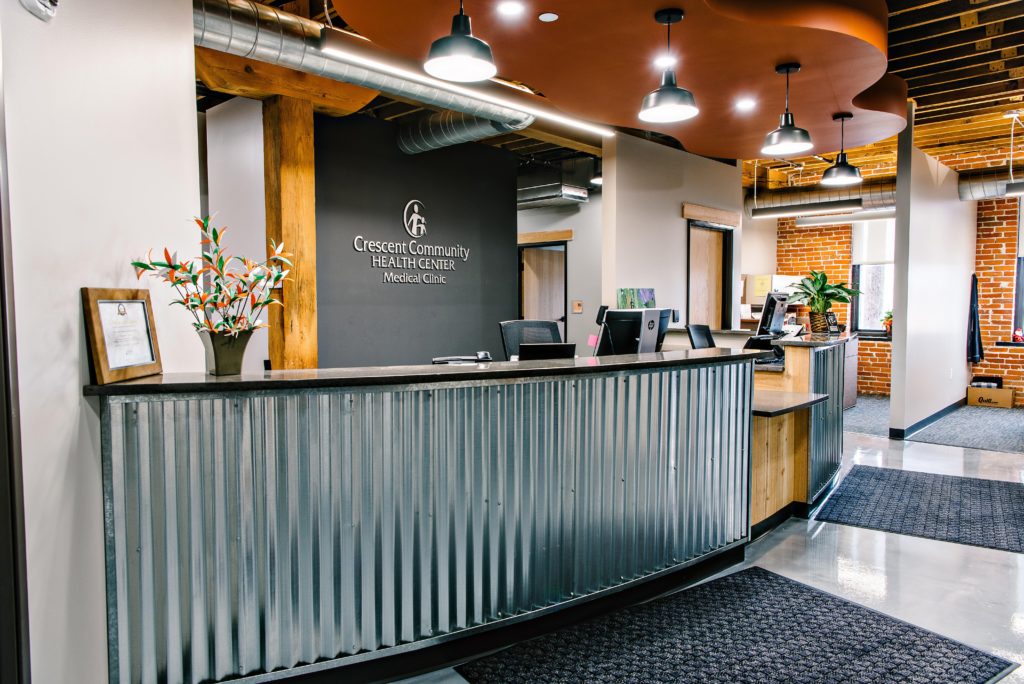
Crescent Community Health Center Reaches Reluctant, Immobile and Transportation-Challenged Patients With Telehealth Services
Like many other health care facilities, Crescent Community Health Center in Dubuque, IA, was offering no telehealth services prior to the COVID-19 pandemic in 2020. As the clinic hit the ground running in order to protect its patients and staff in a non-contact manner while delivering needed health care services, its staff not only learned about the mechanics of telehealth but also discovered its unique advantages. The Great Plains Telehealth Resources & Assistance Center (gpTRAC) served as an on-going resource to various community health clinics, like Crescent Community Health Center, that belong to the Iowa Primary Care Association (PCA).
“You know, one of the major patient complaints is that they often don’t feel heard,” said Tara Wepking, director of nursing at Crescent Community Health Center. “When you’re conducting a telehealth appointment and you can’t physically assess a patient, it forces a different kind of engagement. We’ve found that both our patients and providers really enjoy telehealth visits, and I think part of that is because patients feel like they have been heard. There are definitely added benefits in this mode of delivering care.”
In particular, the Crescent Community team has found it easier to deliver ongoing healthcare services to its hard-to-serve populations including those who are reluctant to take the time for in-person appointments, for those who are physically immobile, and for those who simply cannot get reliable transportation.

Photo description: Crescent Community Health Center
Reluctant Patients Willing to Engage Virtually
As healthcare providers know, some individuals simply do not like to go to the doctor. However, Crescent Community has found that telehealth is a more effective way to connect with those who are reluctant but still have chronic health issues that need to be checked regularly.
“We have some high-risk patients who are immuno-compromised who are simply worried about exposure to COVID and other illnesses,” Wepking said. “Besides offering telehealth appointments, we’ve also set up mobile offices to reduce contact as well as curbside service for things like blood draws, blood pressure checks and point of care tests.”
According to Wepking, Crescent Community has seen its no-show rate dramatically decrease when telehealth options became available. “It’s a great way to catch up with reluctant patients,” she said. “In the past, we have struggled to get some patients into the clinic for follow-up. Now, with telehealth, they are more likely to engage with us. We also have the flexibility to more easily reschedule. Our staff will call someone who has missed a telehealth appointment intermittently and try to reschedule in an open slot later in the day.”
Immobile Patients Receive More Complete, Efficient Care
Crescent Community serves patients who are extremely immobile and homebound, and telehealth has allowed providers to offer more complete and efficient healthcare to this underserved population.
“These patients may be so immobile that it’s difficult to even get to the bathroom on their own,” Wepking said. “Often, they have been unable to get a wheelchair and may have to live in a low-income space that is simply not designed for handicapped residents.”
These patients can now call in and explain their healthcare situation. A triage nurse is available to determine what kind of care would be best in the situation. If a telehealth appointment is deemed appropriate, they may schedule one that includes the provider, the patient, and ideally, a caregiver who is with the patient.
“They can all connect virtually, and the friend or family member who is there to help can assist in facilitating the virtual exam,” Wepking explained. “We start with an anxiety and depression screening and may request vitals like blood pressure if they have a home monitor. The caregiver may be asked to use the flashlight on the phone to help the provider examine a wound or take a picture of a wound, with the patient’s consent, that can be sent to us and filed so we have a record of the healing process.”
In some cases, the provider may order labs or blood work, arrange for a home health nurse to visit the patient, or simply schedule a telehealth follow-up appointment once the care is delivered.

Photo description: Crescent Community Health Center front desk
Overcoming Transportation Challenges
The lack of reliable transportation is often an additional roadblock for both reluctant and immobile patients. In addition, other underserved populations such as people who are incarcerated and the Marshallese community, which is a group of people that have relocated to the Dubuque area from the Marshall Islands, face transportation issues.
“We really serve just about any population you can think of,” Wepking said. “We have an interpreter available now who can join telehealth visits with the Marshallese community. This population often struggles with diabetes and hypertension. Culturally, they live in multi-generational households, which puts them at greater risk for COVID as well.”
Besides mobile, drive-up and telehealth services, Crescent Health also put their providers on a rotation so they could conduct telehealth appointments from their home for two weeks and serve as the in-house provider between those rotations to decrease risk and exposure.
Currently, Crescent Health conducts about 25% of its appointments through telehealth, down from a peak of about 95% at the beginning of the pandemic. “We hope we can continue even after COVID passes,” Wepking said. “We definitely see the benefit for a good chunk of our patient population. It’s a nice way to expand our care to these particularly underserved populations.”
